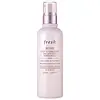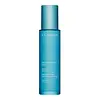What's inside
What's inside
 Key Ingredients
Key Ingredients

 Benefits
Benefits

 Concerns
Concerns

 Ingredients Side-by-side
Ingredients Side-by-side

Water
Skin ConditioningGlycerin
HumectantLimnanthes Alba Seed Oil
Skin ConditioningCaprylic/Capric Triglyceride
MaskingPolyglyceryl-10 Myristate
Skin ConditioningC9-12 Alkane
Solvent1,2-Hexanediol
Skin ConditioningPolyglycerin-3
HumectantPropanediol
SolventCellulose
AbsorbentRosa Damascena Flower Water
MaskingRosa Damascena Extract
MaskingRosa Damascena Flower Extract
MaskingAchillea Millefolium Extract
CleansingRosa Damascena Flower Oil
MaskingCucumis Sativus Fruit Extract
EmollientJojoba Esters
EmollientCaprylyl Glycol
EmollientAcrylates/C10-30 Alkyl Acrylate Crosspolymer
Emulsion StabilisingSodium Stearoyl Glutamate
CleansingCoco-Caprylate/Caprate
EmollientXanthan Gum
EmulsifyingTocopheryl Acetate
AntioxidantTrisodium Ethylenediamine Disuccinate
Sodium Hyaluronate
HumectantButylene Glycol
HumectantSodium Hydroxide
BufferingPentylene Glycol
Skin ConditioningCitric Acid
BufferingTocopherol
AntioxidantChlorphenesin
AntimicrobialSodium Benzoate
MaskingPotassium Sorbate
PreservativeCitronellol
PerfumingGeraniol
PerfumingWater, Glycerin, Limnanthes Alba Seed Oil, Caprylic/Capric Triglyceride, Polyglyceryl-10 Myristate, C9-12 Alkane, 1,2-Hexanediol, Polyglycerin-3, Propanediol, Cellulose, Rosa Damascena Flower Water, Rosa Damascena Extract, Rosa Damascena Flower Extract, Achillea Millefolium Extract, Rosa Damascena Flower Oil, Cucumis Sativus Fruit Extract, Jojoba Esters, Caprylyl Glycol, Acrylates/C10-30 Alkyl Acrylate Crosspolymer, Sodium Stearoyl Glutamate, Coco-Caprylate/Caprate, Xanthan Gum, Tocopheryl Acetate, Trisodium Ethylenediamine Disuccinate, Sodium Hyaluronate, Butylene Glycol, Sodium Hydroxide, Pentylene Glycol, Citric Acid, Tocopherol, Chlorphenesin, Sodium Benzoate, Potassium Sorbate, Citronellol, Geraniol
Water
Skin ConditioningCaprylic/Capric Triglyceride
MaskingRosa Damascena Flower Water
MaskingBetaine
HumectantPropanediol
SolventGlycerin
HumectantDicaprylyl Carbonate
EmollientButylene Glycol
HumectantSucrose Polystearate
EmollientPotassium Cetyl Phosphate
EmulsifyingCaprylyl Glycol
EmollientCarbomer
Emulsion StabilisingParfum
MaskingSodium Hyaluronate
HumectantEthylhexylglycerin
Skin ConditioningTocopheryl Acetate
AntioxidantCetyl Palmitate
EmollientPotassium Sorbate
PreservativeDisodium EDTA
Sodium Hydroxide
BufferingBenzyl Alcohol
PerfumingKalanchoe Pinnata Leaf Extract
MaskingMarrubium Vulgare Extract
Skin ConditioningCitric Acid
BufferingPhenethyl Alcohol
MaskingFurcellaria Lumbricalis Extract
Skin ConditioningSodium Benzoate
MaskingDehydroacetic Acid
PreservativeLapsana Communis Flower/Leaf/Stem Extract
Skin ConditioningMaris Sal
Skin ConditioningWater, Caprylic/Capric Triglyceride, Rosa Damascena Flower Water, Betaine, Propanediol, Glycerin, Dicaprylyl Carbonate, Butylene Glycol, Sucrose Polystearate, Potassium Cetyl Phosphate, Caprylyl Glycol, Carbomer, Parfum, Sodium Hyaluronate, Ethylhexylglycerin, Tocopheryl Acetate, Cetyl Palmitate, Potassium Sorbate, Disodium EDTA, Sodium Hydroxide, Benzyl Alcohol, Kalanchoe Pinnata Leaf Extract, Marrubium Vulgare Extract, Citric Acid, Phenethyl Alcohol, Furcellaria Lumbricalis Extract, Sodium Benzoate, Dehydroacetic Acid, Lapsana Communis Flower/Leaf/Stem Extract, Maris Sal
Ingredients Explained
These ingredients are found in both products.
Ingredients higher up in an ingredient list are typically present in a larger amount.
Butylene Glycol (or BG) is used within cosmetic products for a few different reasons:
Overall, Butylene Glycol is a safe and well-rounded ingredient that works well with other ingredients.
Though this ingredient works well with most skin types, some people with sensitive skin may experience a reaction such as allergic rashes, closed comedones, or itchiness.
Learn more about Butylene GlycolThis ingredient is an emollient, solvent, and texture enhancer. It is considered a skin-softener by helping the skin prevent moisture loss.
It helps thicken a product's formula and makes it easier to spread by dissolving clumping compounds.
Caprylic Triglyceride is made by combining glycerin with coconut oil, forming a clear liquid.
While there is an assumption Caprylic Triglyceride can clog pores due to it being derived from coconut oil, there is no research supporting this.
Learn more about Caprylic/Capric TriglycerideCaprylyl Glycol is a humectant and emollient, meaning it attracts and preserves moisture.
It is a common ingredient in many products, especially those designed to hydrate skin. The primary benefits are retaining moisture, skin softening, and promoting a healthy skin barrier.
Though Caprylyl Glycol is an alcohol derived from fatty acids, it is not the kind that can dry out skin.
This ingredient is also used as a preservative to extend the life of products. It has slight antimicrobial properties.
Learn more about Caprylyl GlycolCitric Acid is an alpha hydroxy acid (AHA) naturally found in citrus fruits like oranges, lemons, and limes.
Like other AHAs, citric acid can exfoliate skin by breaking down the bonds that hold dead skin cells together. This helps reveal smoother and brighter skin underneath.
However, this exfoliating effect only happens at high concentrations (20%) which can be hard to find in cosmetic products.
Due to this, citric acid is usually included in small amounts as a pH adjuster. This helps keep products slightly more acidic and compatible with skin's natural pH.
In skincare formulas, citric acid can:
While it can provide some skin benefits, research shows lactic acid and glycolic acid are generally more effective and less irritating exfoliants.
Most citric acid used in skincare today is made by fermenting sugars (usually from molasses). This synthetic version is identical to the natural citrus form but easier to stabilize and use in formulations.
Read more about some other popular AHA's here:
Learn more about Citric AcidGlycerin is already naturally found in your skin. It helps moisturize and protect your skin.
A study from 2016 found glycerin to be more effective as a humectant than AHAs and hyaluronic acid.
As a humectant, it helps the skin stay hydrated by pulling moisture to your skin. The low molecular weight of glycerin allows it to pull moisture into the deeper layers of your skin.
Hydrated skin improves your skin barrier; Your skin barrier helps protect against irritants and bacteria.
Glycerin has also been found to have antimicrobial and antiviral properties. Due to these properties, glycerin is often used in wound and burn treatments.
In cosmetics, glycerin is usually derived from plants such as soybean or palm. However, it can also be sourced from animals, such as tallow or animal fat.
This ingredient is organic, colorless, odorless, and non-toxic.
Glycerin is the name for this ingredient in American English. British English uses Glycerol/Glycerine.
Learn more about GlycerinPotassium Sorbate is a preservative used to prevent yeast and mold in products. It is commonly found in both cosmetic and food products.
This ingredient comes from potassium salt derived from sorbic acid. Sorbic acid is a natural antibiotic and effective against fungus.
Both potassium sorbate and sorbic acid can be found in baked goods, cheeses, dried meats, dried fruit, ice cream, pickles, wine, yogurt, and more.
You'll often find this ingredient used with other preservatives.
Learn more about Potassium SorbatePropanediol is an all-star ingredient. It softens, hydrates, and smooths the skin.
It’s often used to:
Propanediol is not likely to cause sensitivity and considered safe to use. It is derived from corn or petroleum with a clear color and no scent.
Learn more about PropanediolRosa Damascena Flower Water comes from the Damask rose. It is a dilluted version of the Rose Essential oil.
The Damask Roses' petals have antioxidant, antimicrobial, and fragrance compounds. Though antioxidants are great for soothing skin, the fragrance compounds can irritate it.
Sodium Benzoate is a preservative. It's used in both cosmetic and food products to inhibit the growth of mold and bacteria. It is typically produced synthetically.
Both the US FDA and EU Health Committee have approved the use of sodium benzoate. In the US, levels of 0.1% (of the total product) are allowed.
Sodium benzoate works as a preservative by inhibiting the growth of bacteria inside of cells. It prevents the cell from fermenting a type of sugar using an enzyme called phosphofructokinase.
It is the salt of benzoic acid. Foods containing sodium benzoate include soda, salad dressings, condiments, fruit juices, wines, and snack foods.
Studies for using ascorbic acid and sodium benzoate in cosmetics are lacking, especially in skincare routines with multiple steps.
We always recommend speaking with a professional, such as a dermatologist, if you have any concerns.
Learn more about Sodium BenzoateSodium Hyaluronate is hyaluronic acid's salt form. It is commonly derived from the sodium salt of hyaluronic acid.
Like hyaluronic acid, it is great at holding water and acts as a humectant. This makes it a great skin hydrating ingredient.
Sodium Hyaluronate is naturally occurring in our bodies and is mostly found in eye fluid and joints.
These are some other common types of Hyaluronic Acid:
Learn more about Sodium HyaluronateSodium Hydroxide is also known as lye or caustic soda. It is used to adjust the pH of products; many ingredients require a specific pH to be effective.
In small amounts, sodium hydroxide is considered safe to use. However, large amounts may cause chemical burns due to its high alkaline.
Your skin has a natural pH and acid mantle. This acid mantle helps prevent harmful bacteria from breaking through. The acid mantle also helps keep your skin hydrated.
"Alkaline" refers to a high pH level. A low pH level would be considered acidic.
Learn more about Sodium HydroxideTocopheryl Acetate is AKA Vitamin E. It is an antioxidant and protects your skin from free radicals. Free radicals damage the skin by breaking down collagen.
One study found using Tocopheryl Acetate with Vitamin C decreased the number of sunburned cells.
Tocopheryl Acetate is commonly found in both skincare and dietary supplements.
Learn more about Tocopheryl AcetateWater. It's the most common cosmetic ingredient of all. You'll usually see it at the top of ingredient lists, meaning that it makes up the largest part of the product.
So why is it so popular? Water most often acts as a solvent - this means that it helps dissolve other ingredients into the formulation.
You'll also recognize water as that liquid we all need to stay alive. If you see this, drink a glass of water. Stay hydrated!
Learn more about Water